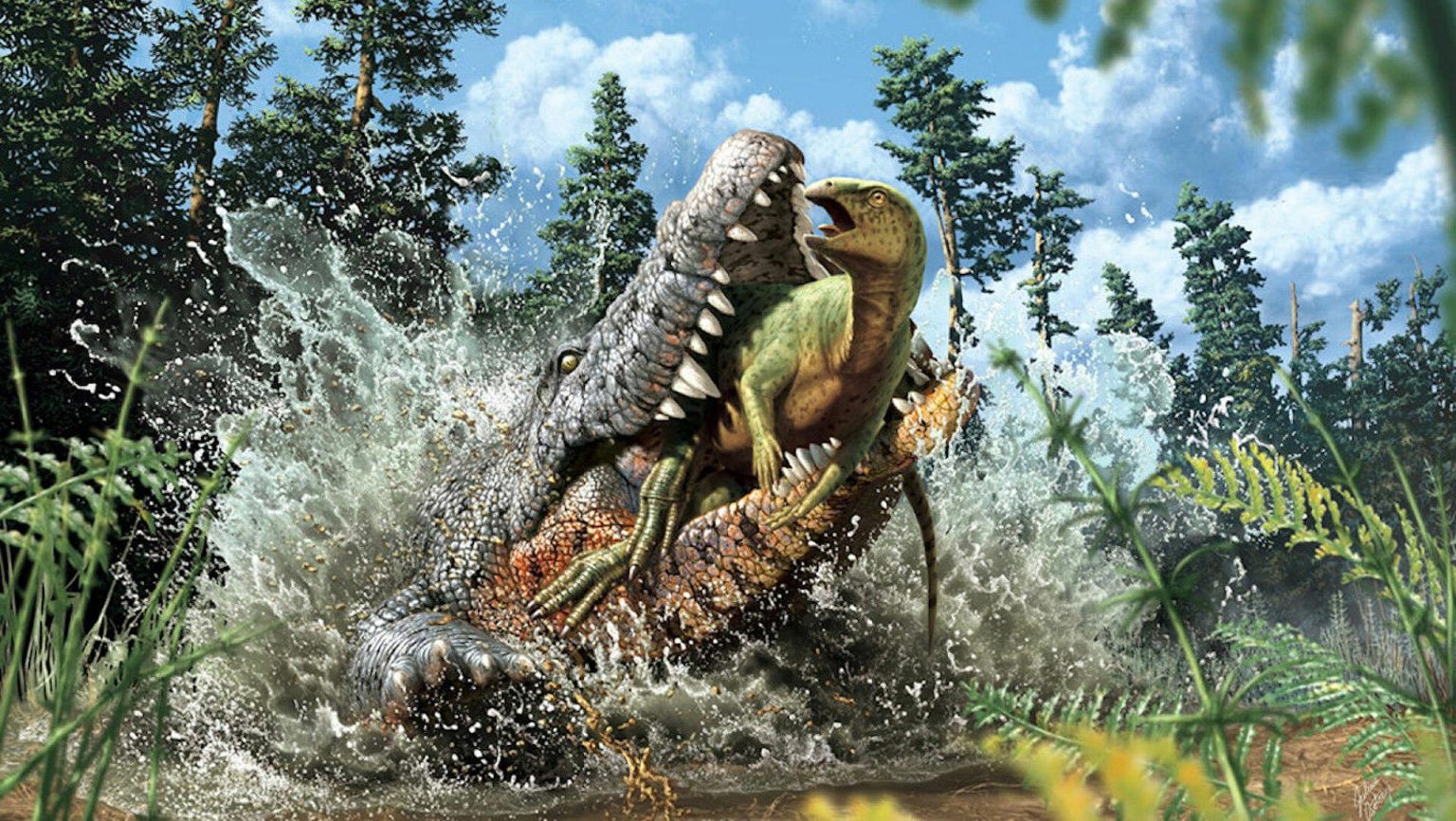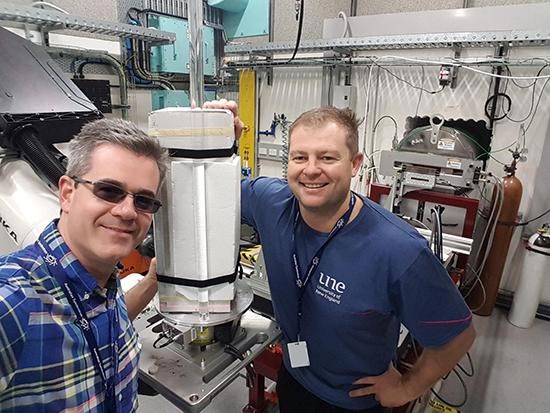Interestingly, researchers have found undeniable proof that an old crocodile predecessor chowed down on a dinosaur.

Protected inside a fossilized crocodyliform, an individual from a freshly discovered animal varieties named Confractosuchus sauroktonos, are the somewhat processed stays of an adolescent bipedal ornithopod, scientist Matt White of the University of New England in Australia and partners report February 10 in Gondwana Research.
Progressed atomic and synchrotron imaging has affirmed that a 93-million-year-old crocodile found in Central Queensland ate up an adolescent dinosaur in view of stays found in the fossilized stomach substance




The disclosure of fossils was made by a group from the Australian Age of Dinosaurs Museum and the University of New England who completed the examination with ANSTO researchers
Neutron and synchrotron instruments infiltrated rock to uncover and reproduce the disguised fossilized substance
Progressed atomic and synchrotron imaging has affirmed that a 93-million-year-old crocodile found in Central Queensland ate up an adolescent dinosaur in light of stays found in the fossilized stomach substance.
The revelation of the fossils in 2010 was made by the Australian Age of Dinosaurs Museum (QLD) in relationship with the University of New England, who are distributing their examination in the diary Godwana Research.
The exploration was completed by an enormous group drove by Dr Matt White of the Australian Age of Dinosaurs Museum and the University of New England.


The crocodile Confractosuchus sauroktonos, which deciphers as ‘the wrecked crocodile dinosaur executioner’ was around 2 to 2.5 meters long. ‘Broken’ alludes to the way that the crocodile was found in a gigantic, broke stone.
Early neutron imaging sweeps of one stone section from the rock recognized bones of the little chicken-sized adolescent dinosaur in the stomach, an ornithopod that has not yet been officially distinguished by species.




 Joseph Bevitt and Matt White
Joseph Bevitt and Matt White
Dr. Joseph Bevitt and Dr. Matt White with the example on the Imaging and Medical beamline at ANSTO’s Australian Synchrotron. Credit: Australia’s Nuclear Science and Technology Organization (ANSTO)
Senior Instrument Scientist Dr. Joseph Bevitt clarified that the dinosaur bones were totally installed inside the thick ironstone rock and were fortunately found when the example was presented to the penetrative force of neutrons at ANSTO.
Dingo, Australia’s just neutron imaging instrument, can be utilized to create two and three-layered pictures of a strong item and uncover disguised highlights inside it.
“In the underlying sweep in 2015, I recognized a covered bone in there that resembled a chicken bone with a snare on it and thought straight away that it was a dinosaur,” clarified Dr. Bevitt.
“Natural eyes had never seen it beforehand, as it was, yet is, completely encased in rock.”


The finding prompted further, high-goal examines utilizing Dingo and the synchrotron X-beam Imaging and Medical Beamline over various years.
Fossilized Crocodile Dingo Neutron Imaging Instrument
The ill-equipped stone examples containing the fossilized crocodile. Right: 3D pictures of the encased crocodile remade with the Imaging and Medical Beamline, and inset, the stomach substance uncovered utilizing the Dingo neutron imaging instrument. Credit: Australia’s Nuclear Science and Technology Organization (ANSTO)

“3D computerized filters from the Imaging and Medical Beamline directed the actual arrangement of the crocodile, which was inconceivable without knowing definitively where the bones were,” said Dr. Bevitt.
Alternately, the delicate examples must be painstakingly diminished to a size that synchrotron X-beams could infiltrate for great examining.
“The outcomes were remarkable in giving a whole image of the crocodile and its last supper, a somewhat processed adolescent dinosaur.”
It is accepted to be the initial time a synchrotron beamline has been utilized along these lines.


IMBL Instrument researcher Dr. Anton Maximenko helped the analytical group to push facing as far as possible and finetune the office to effectively check the enormous examples.
Dr. Bevitt clarified that the group utilized the full power of the synchrotron X-beam bar to accomplish the outcomes on thick stone.
Together, Drs Bevitt and White did every one of the information handling and significantly, grew new programming instruments for handling and blending all informational collections of this divided crocodile. Along these lines, the crocodile was remade as a computerized, 3D jigsaw puzzle.
To affirm the dinosaur was really in the stomach of the crocodile, the group noticed infilled worm burrows, plant roots and geographical highlights that reached out between rock sections.
“The science of rock gave the proof, said Dr Bevitt.


Examiners think almost certainly, the crocodile was up to speed in a megaflood occasion, was covered and passed on abruptly.
“The fossilized remaining parts were found in an enormous stone. Solidifications regularly structure when natural matter, or say a crocodile, sinks to the lower part of a stream. Since the climate is plentiful in minerals, inside the space of days the mud around the organic entity can set and solidify in light of the fact that the presence of microorganisms,” clarified Dr Bevitt.
Crocodyliforms incorporate current species like crocodiles and gators as well as their progenitors. Those progenitors lived close by dinosaurs for a long period of time, and past proof, for example, indentations on fossilized dinosaur bones, has indicated that croc precursors feasted on dinosaurs whenever the open door emerged (SN: 10/24/01). However, fossils with genuine safeguarded stomach substance are incredibly intriguing (SN: 8/10/20). Indeed, C. sauroktonos is just the second terminated crocodyliform fossil with recognizable stomach substance – and the first to uncover a feast of dinosaur.


C. sauroktonos was around 2.5 meters long – somewhat more modest than a grown-up female American croc – and lived between 104 million and 92.5 million years prior in what is currently Queensland, Australia. Likenesses between the animal’s skull highlights and those of living and terminated crocodyliforms propose that it didn’t simply eat dinos. C. sauroktonos presumably cast a wide net when it came to searching out prey.
With respect to the horrible substance of its stomach – including a couple of ribs and pieces of leg and arm bone – they address the very first ornithopod found in Queensland’s Winton rock development. The herbivorous dino may likewise be another species, in spite of the fact that it’s challenging to tell from these couple of pieces, the group says.
Reference: “Abdominal contents reveal Cretaceous crocodyliforms ate dinosaurs” by Matt A. White, Phil R. Bell, Nicolás E. Campione, Gabriele Sansalone, Tom Brougham, Joseph J.Bevitt, Ralph E. Molnar, Alex G. Cook, Stephen Wroe and David A. Elliott, 10 February 2022, Godwana Research.


